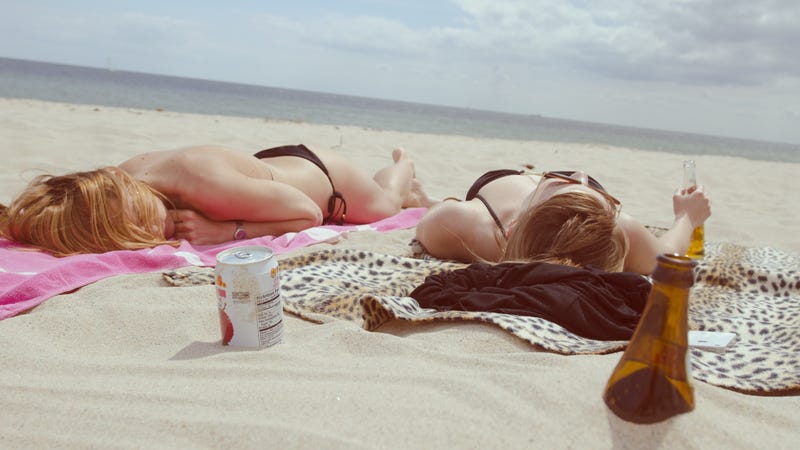
I’m so diligent about my sunscreen these days that my skin now, in July, is still the same light beige color that it was this winter. But if you yearn for that sun-kissed glow, you’re probably wondering what is the best way to get a tan—and whether any method is truly safe.
The Sun Gives You Cancer
I roll my eyes whenever I hear that such-and-such food additive is linked to cancer, because usually the risk is infinitesimal. But sunlight is strongly linked to cancer, and skin cancer is the most common cancer in America.
Advertisement
There’s no way to get a tan from the sun without exposing yourself to UVA and UVB rays, so you’re best off using sunscreen when you can.
Once you have a tan, that protects you a bit from further exposure, but only a little: a tan is equivalent to about SPF 4 sunscreen, although to be fair, SPF 15 sunscreen also works out to about SPF 4 protection when you apply it thinly (the way most of us do).
Tanning Beds Also Give You Cancer
Indoor tanning, with UV-emitting light bulbs, is supposed to be a little bit safer than lying out in the sun. The difference is minimal, though. Indoor tanning equipment is considered a carcinogen by both the US and by the World Health Organization, and its use is estimated to be responsible for an estimated 400,000 cases of skin cancer in the US each year.
Advertisement
Tanning beds only use low levels of sunburn-causing UVB, but they give you a huge dose of UVA light. That can cause tanning, but it also contributes to cancer and to the aging, wrinkling, skin-thickening effects of the sun. So you may look good in the short term, but you’re only making matters worse for future you.
Sunless Tanners Are Probably(?) Safe
Spray tans and sunless tanning lotions are your best bet if you must have a tan. They don’t damage your skin like the sun does, and they haven’t been linked to skin cancer. They contain a sugar-like molecule called dihydroxyacetone (DHA) that reacts with the proteins in your skin to create a brownish color. There are different formulations of sunless tanners, including some that are “DHA-free” but work in a similar way.
Advertisement
The color they produce on your skin isn’t a true tan; it just looks like one. It doesn’t provide any significant protection from further sun exposure, so you’ll still need to use plenty of sunscreen.
There are still some unknowns about the safety of sunless tanners, but there’s no evidence that they’re worse for you than the actual cancer-causing sun, so keep things in perspective.
So here are the unknowns. We don’t know if it’s safe to inhale the spray in a tanning booth, or to let it contact mucous membranes like the areas in your mouth and eyes. For now, it’s best to use nose plugs, lip balm, and goggles while you get a spray tan. (Check with the tanning facility; they’ll probably supply these.) Or you can use a sunless tanning lotion to get the same look at home, as long as you’re confident you can rub it in evenly.
Advertisement
There’s also some speculation about whether DHA can damage the DNA in your skin, but to date there’s no clear evidence that it poses risks to real life humans in real life tanning doses. Chances are, even if that turns out to be true, it’s likely to be a much smaller risk than the risk you take by stepping outside sans sunscreen.
from Lifehacker http://bit.ly/2Ny5rUX
via IFTTT
